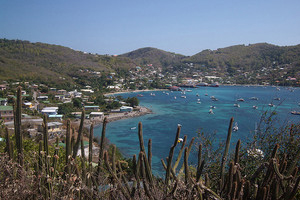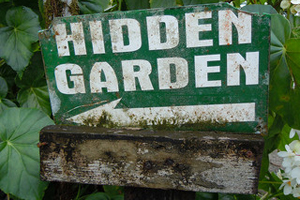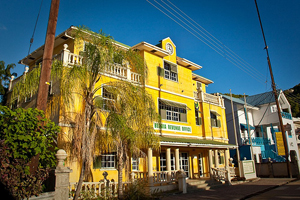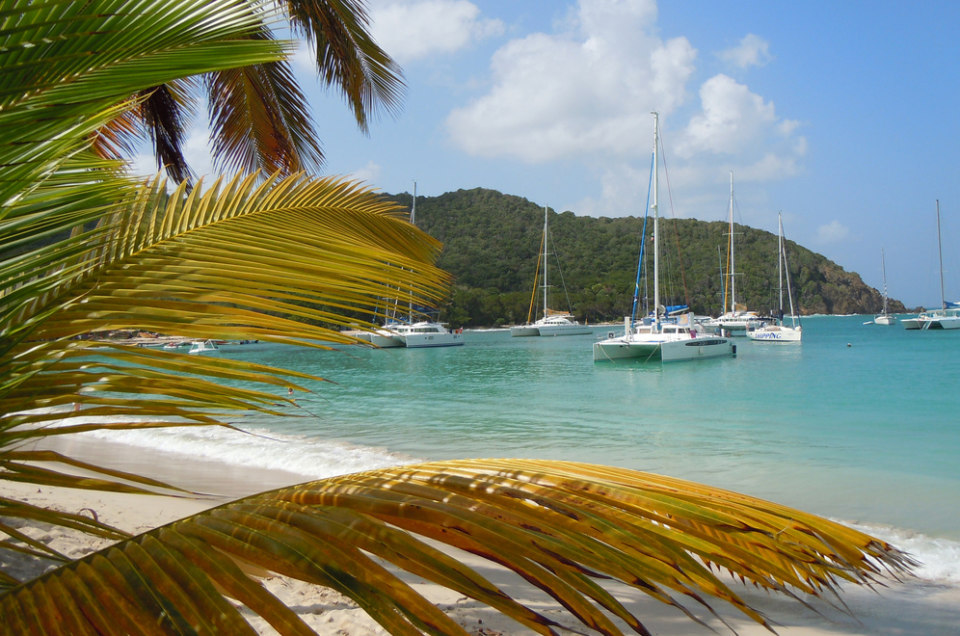I’m having trouble sleeping. I’m in St. Vincent on Young Island, a private oasis with luxury cottages dotted over lush hills and along the turquoise bay. The bed is comfy, overhead ceiling fans whirr above. And I’m unplugged from the world with no television, Internet service or phone. It’s those whistling frogs, a cacophonic choir that just won’t quit just outside my room. By the second night, I’ve become accustomed to them. I notice instead the scent of ginger lilies and sea air blowing through my windows.
Now, I’m ready to explore St. Vincent and the Grenadines, 32 unspoiled islands and cays where you get a genuine taste of the Caribbean the way it was. Free of fast food chains, high-rise condo and tourist-weary residents. This part of the West Indies strikes a balance between luxe and rustic.
It has its share of five-star resorts, but they are presented in a picturesque package, decorated with black and white sand beaches, mountains, banana plantations, sleepy fishing villages and secluded coves.
The friendly locals will tell you that St. Vincent is behind other Caribbean destinations by 20 years. But it’s said with pride. Development is happening, but slowly. The freshly opened, highly posh Buccament Bay Resort is the kind of place there will be more of. It’s likely to change your idea about what an all-inclusive is.
The service and food are notches above the usual. Guests are welcomed with chilled coconut water served in a coconut. Many villas have private plunge pools and the spa pampers guests with signature ESPA treatments. Try the two-hour Tropical Soother to hydrate and invigorate sun-parched skin with mint and aloe-based products. Sign up for the performing arts program where you can learn to sing, act and tap into your inner Christina Aguilera. Or do nothing but hang by the beautiful pools or walk along the powdery white sand, shipped in from Guyana. (The natural beach is black, volcanic sand.)
St. Vincent is very laidback. That’s not to say there aren’t things to do. There are. It is known as a great spot for hiking (killer hills!), especially around La Soufrière volcano where trails stretch up to 19 km. Snorkelling is pristine, thanks to its crystal clear waters and abundant marine life. And Montreal Gardens (no relation to Canada), with its colourful African tulip trees and exotic flowers, is a haven for scenery-craving trekkers. But visitors come here to the island mainly to soak up this tropical, fun ’n sun destination offers.
If you think St. Vincent has a slow pace, hit the outlying islands. Mustique attracts celebs (Shania Twain, David Bowie, Tommy Hilfiger) running away from the world, or musicians (Oasis, The Rolling Stones) recording at the top notch studio there. Pink and white sand attracts international guests content to veg on a beach lounger and take the odd day trip to the Tobago Cays to swim with turtles and to see the dot of land where Johnny Depp shot scenes for Pirates of the Caribbean were filmed. Palm Island Resort (the one and only hotel) has just 37 guest rooms and five beaches, so privacy is virtually assured.
Even the locals need to get away from it all, so they hop the ferry to pretty Bequia (pronounced be-KWAY). They come for the quiet of beaches and restaurants, like Mango’s, just a coconut throw from the sand, to have conch specialties like roti, soup, or curry and wash it down with an icy Hairoun (the local brew) or a spicy, rum punch.
When the action kicks up in high gear in St. Vincent, it’s likely to happen in Kingstown, the capital. Its Vincy Mas – Carnaval celebrations (starting the last Friday in June) are a wild show of calypso and soca music, parades, parties and dancing, what they call “winding and grinding.” Bars are super casual, open air and packed with locals on the weekends (especially Fridays). Order a Malibu and pineapple juice and get your hips moving. Take in this authentic, seemingly untouched slice of the Caribbean while you can. The new Argyle International Airport opens this year, offering direct international jet service from the U.S., Canada and Europe. Consequently, St. Vincent will change, likely at its own pace: slowly.



